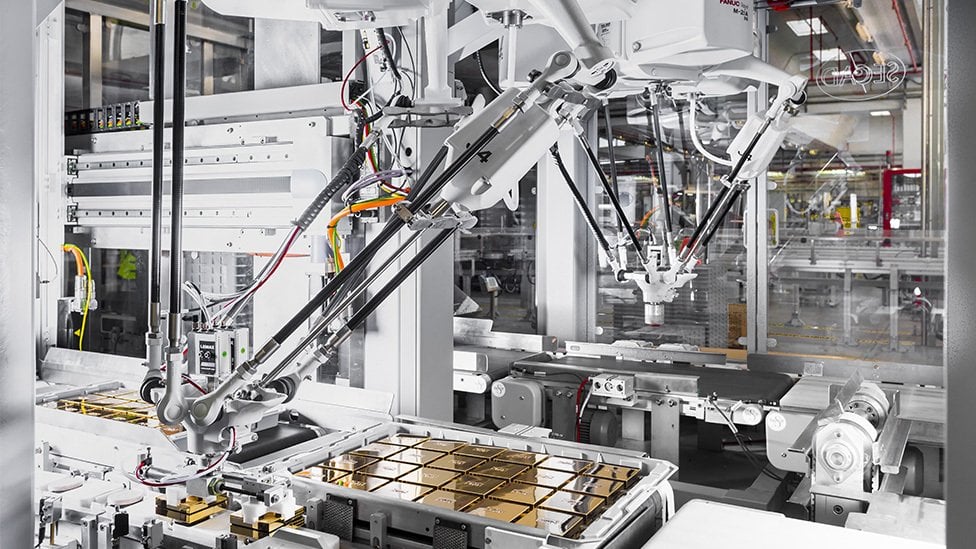Industry 4.0 at L’Oréal
To meet consumers’ changing expectations, industry needs to become more agile, while shortening time to market. Stéphane Lannuzel, Operations Chief Digital Officer at L’Oréal, talks about the technological changes taking place within the Group.
Responding to new consumer demands
Consumers have undergone a transformation. Stéphane reckons they have changed more in the last three to five years than in the previous three decades. “Nowadays, we have to be able to respond to new trends in less than six months”, he says, as increasingly connected and impatient consumers are simply not prepared to wait 18 months – the standard production cycle for a product – to follow a beauty trend spotted on social media. “We are getting closer to a fast fashion-type approach”, observes Stéphane, adding that young people pay much more attention to image than their predecessors did. Another feature of younger consumers is that they might very well ‘google’ a product ahead of time, so that they can head to the store armed with all the details. Added to the information overload is a genuine demand for transparency: customers expect brands to be able to say where products come from and how they are manufactured. “These changes are prompting us to rethink how we structure our operations, i.e. our value chain”, explains Stéphane, who stresses the need to shorten time to market whilst offering broader product ranges and maintaining quality standards. He pinpoints agility and data as two watchwords in the digital transformation. With this in mind, L’Oréal’s Operations 4.0 digital transformation program, which groups together the business of packaging, purchasing as well as manufacturing and supply chain, seeks to harness new technologies, like the Internet of Things, connected objects, augmented or virtual reality and artificial intelligence, to boost flexibility and efficiency. “Whereas in the 1980s and 1990s, our industrial strategies were essentially based around economies of scale, today they are chiefly focused on redesigning the value chain from suppliers to consumers, with flexibility as a recurring theme”, he explains.

L’Oréal has embarked on its digital transformation
The client experience is being used as the yardstick for the Group’s digital transformation. Accordingly, L’Oréal has set five medium-term priorities for its operations personnel: accelerate design, raise the share of connected products, make factories and production lines agile, emphasize customization, and turn consumer service into a business driver.
Accelerate design
To manage shorter product lifecycles, new technologies are being introduced at different stages of the accelerated design process, such as, for instance, approval of prototypes in the project phase. “Instead of building models and testing products in the real world, we can develop 3D models in a matter of hours and use virtual simulation tools”, explains Stéphane. Drop, transport, resistance, virtual merchandising and other tests save L’Oréal a lot of time.
Develop connected products
Connected products make goods more traceable and offer end consumers greater transparency. Given that it sells over seven billion products a year, L’Oréal plans to use connectivity to optimize its supply chain through a global vision of inventory and facilitate day-to-day point of sale (POS) product management (reception, collection, inventory). Connected products are also a way to forge closer ties and enhance contact and interaction with consumers through direct product/phone dialogue.
Deploy more flexible production lines
With consumer demands becoming ever more changing, it is vital to be able to switch easily from one production run to another in response to shifting trends. The first 4.0 pilot projects launched at facilities in Italy, France and the USA have yielded positive initial results from the new agile production lines. Success stories include the agile line at the Lassigny plant, a project led by Director of Operations Jean Lardé. Among other things, the Lassigny line makes changing product formats more straightforward, which is a key aspect of flexibility. The new production lines also have to be able to manage final product differentiation (shade, labelling, etc.) later in the value chain.
Stéphane uses the example of makeup ranges to illustrate this flexibility. “We can produce the base and then choose the color for a lipstick right at the very last moment”, he explains.
Co-creation and customization for a tailor-made approach
Ever wanted a product unique to you? Customization is another of today’s big trends. Young people even want to get in on creating their products. And now they can with POS co-creation opportunities, where consumers can manufacture their very own cosmetic products in-store or have a personal message engraved on their fragrance bottle. This is already happening in the USA and also in London, UK, with Lancôme’s Teint Particulier, where shoppers can use a customization service supported by a smart factory right at the POS.
Make the supply chain a business driver
In addition to traditional BtoB channels, L’Oréal is now turning its focus on BtoC. Today’s customers want products to be available “anytime, anywhere”. So it makes sense that e-commerce is a major focus for the Group and occupies a growing share of sales. Data management, facilitated by artificial intelligence, has had a profound influence on L’Oréal’s value chain. Faint signals on social media and data gathered at POS make up valuable information that can be used to analyze the factors influencing consumers, improve products, anticipate trends and optimize sales. “We harness this type of information to target end consumers more effectively and provide them with the products and services they need, anytime, anywhere.”
A transformation led by innovative people
For some time now, the digital transformation has been encouraging operations personnel to adapt constantly to meet consumer demands and to take on novel projects in disruptive ways, “starting out with a blank canvas, adopting iterative approaches and opening up to new partners such as start ups and tech suppliers”. In conclusion, Stéphane has this to say: “Not only are these changes driving product innovation for consumers, but they represent a unique period of incredible technological innovation for L’Oréal and its people. We are fortunate to be experiencing this truly transformative moment.”